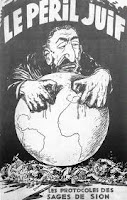A volume in Penguin's "Great Journeys" series, this is an abridgment of the Chronicle of the Navarez Expedition, which relates Alvar Nunez Cabeza de Vaca's nine year ordeal (beginning in 1530) among the natives of the Northern Coast of the Gulf of Mexico and what would become the American Southwest and Gulf of California. Of the six hundred men setting out on the expedition in five ships, only three others were accompanying de Vaca when, sun baked and emaciated, he finally made contact with fellow Spaniards in Mexico.
In addition to being an anthropological document, there are also glimpses into the conquistador mindset, motivated by a brutal greed (it is a lust for rumored gold that leads the expedition astray in the first place). He doesn't spare the details of the misery of the survivors, stalked by native archers and beaten mercilessly while on the verge of death, although the episodes of cannibalism brought on by the maddening pangs of starvation are passed over somewhat quickly.
While the narrative of travel is frustratingly vague regarding de Vaca's route, it is filled with details and observations regarding the native Americans he encountered, and must count as the earliest description of these people and their harsh lifestyle. The Spanish suffered many depredations along the journey: de Vaca survived due to his adaptability and no small amount of luck. He found a useful function as a trader among the various tribes, and eventually he and his companions acquired reputations as great healers. His sense of compassion - rare among soldiers of fortune- must also have served him well in his darker moments.
Along the journey, de Vaca formed a sympathetic respect for the natives he encountered, and, in addition to the more horrifying aspects of native life, he recorded their tenderness as well. By the end of the journey, we see him surrounded by great flocks of followers, like some first century eastern Mediterranean wonder worker. When he finally encounters his countrymen, he is shocked by their brutality and duplicity. Assured by his rescuers that his followers will be better treated, they are enslaved and assaulted as soon as he is out of view. He ultimately gains a victory of sorts when imploring that the King would be better served by the conversion, rather than the destruction of the natives. It is a tender mercy that, in some instances at least, the cross triumphed over the lance.
Cabeza de Vaca's narrative is a testament of human endurance and adaptability under extreme circumstances.













